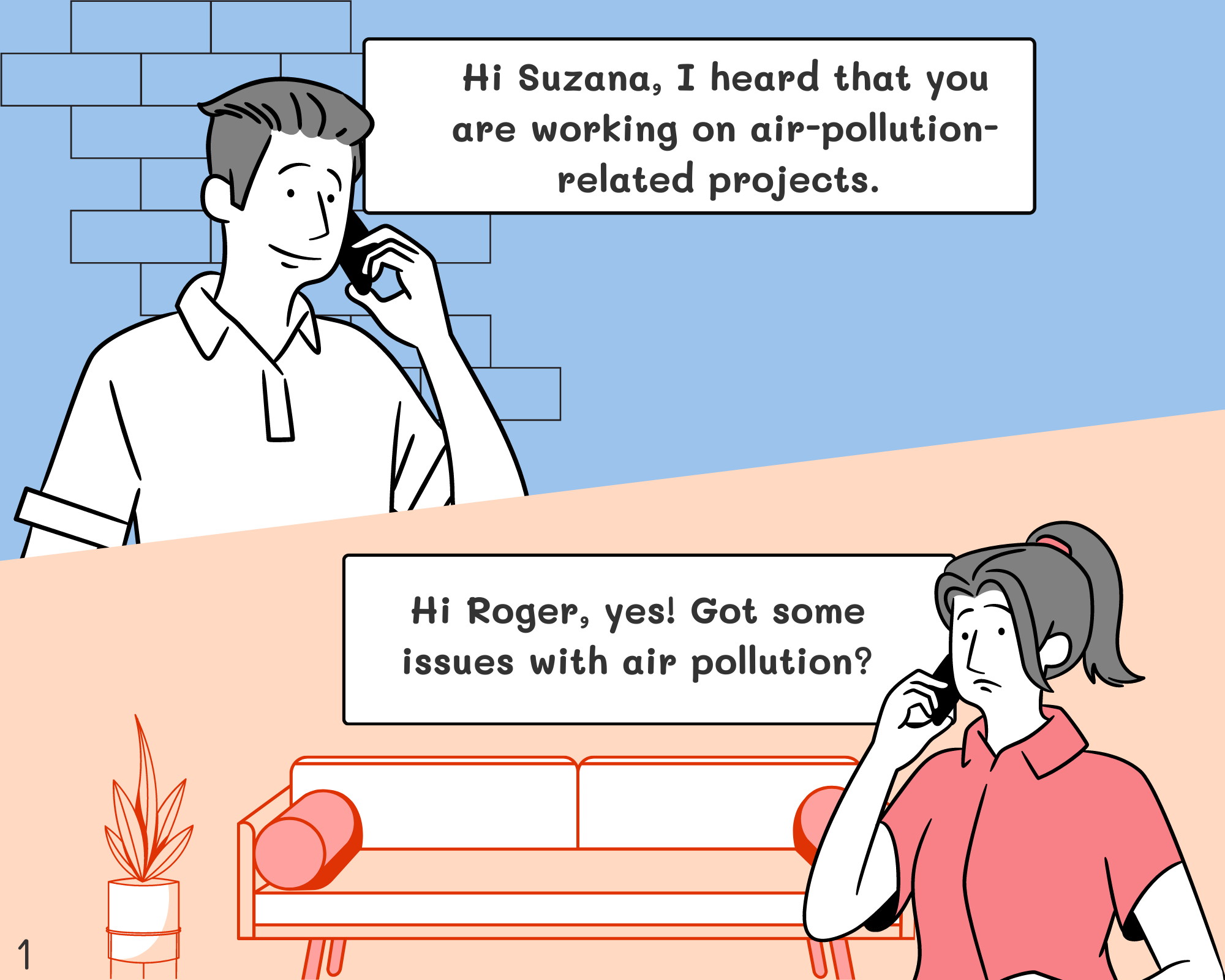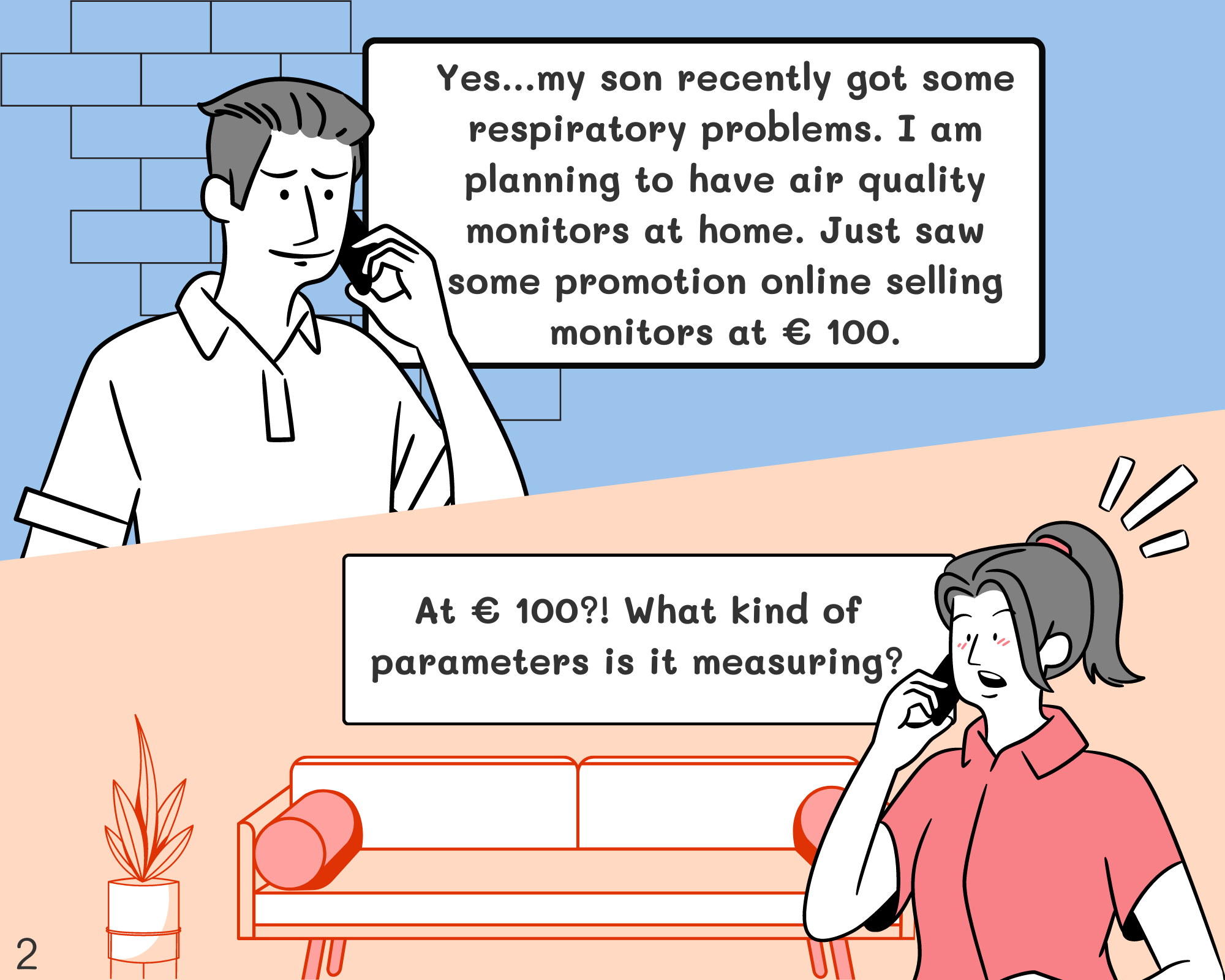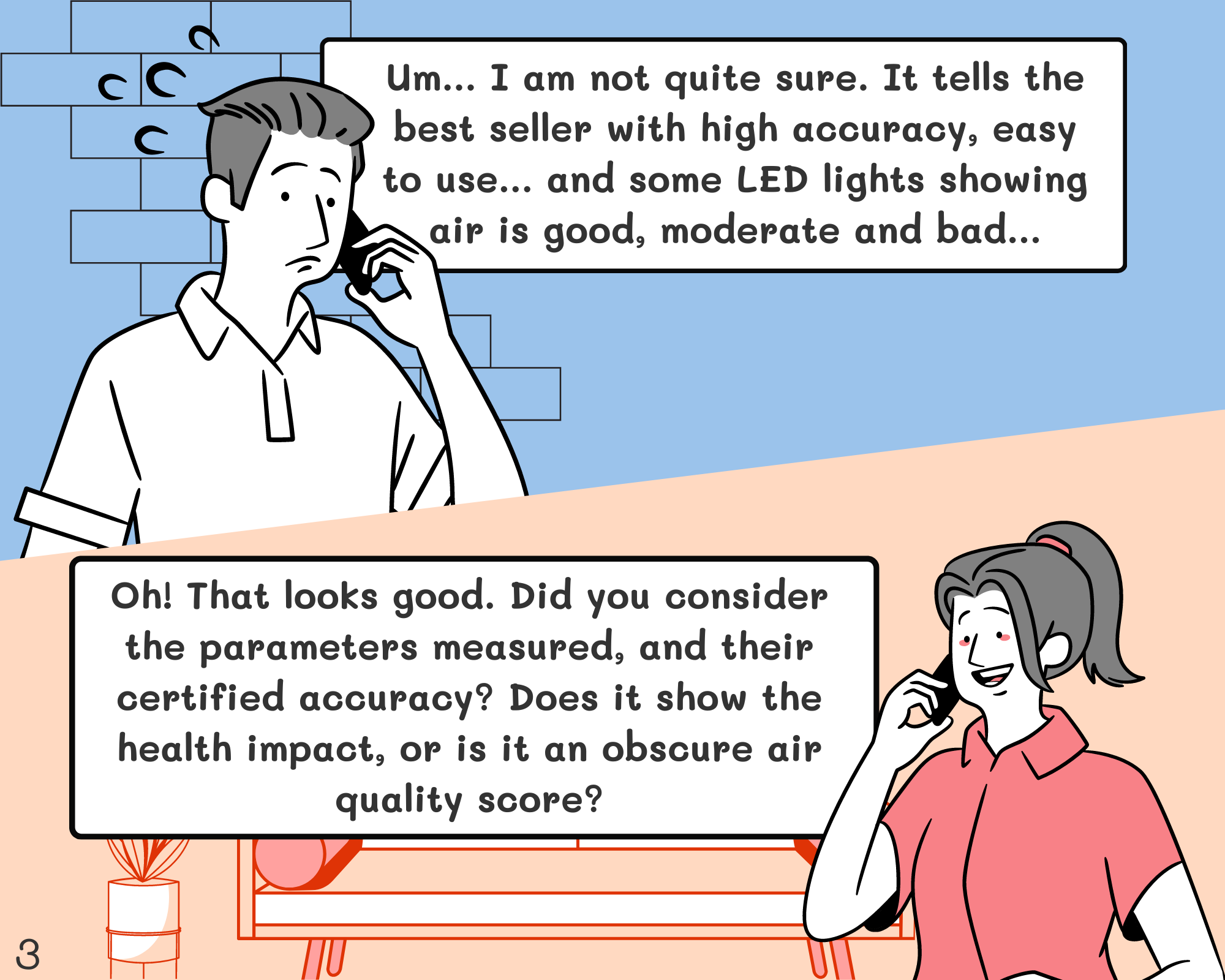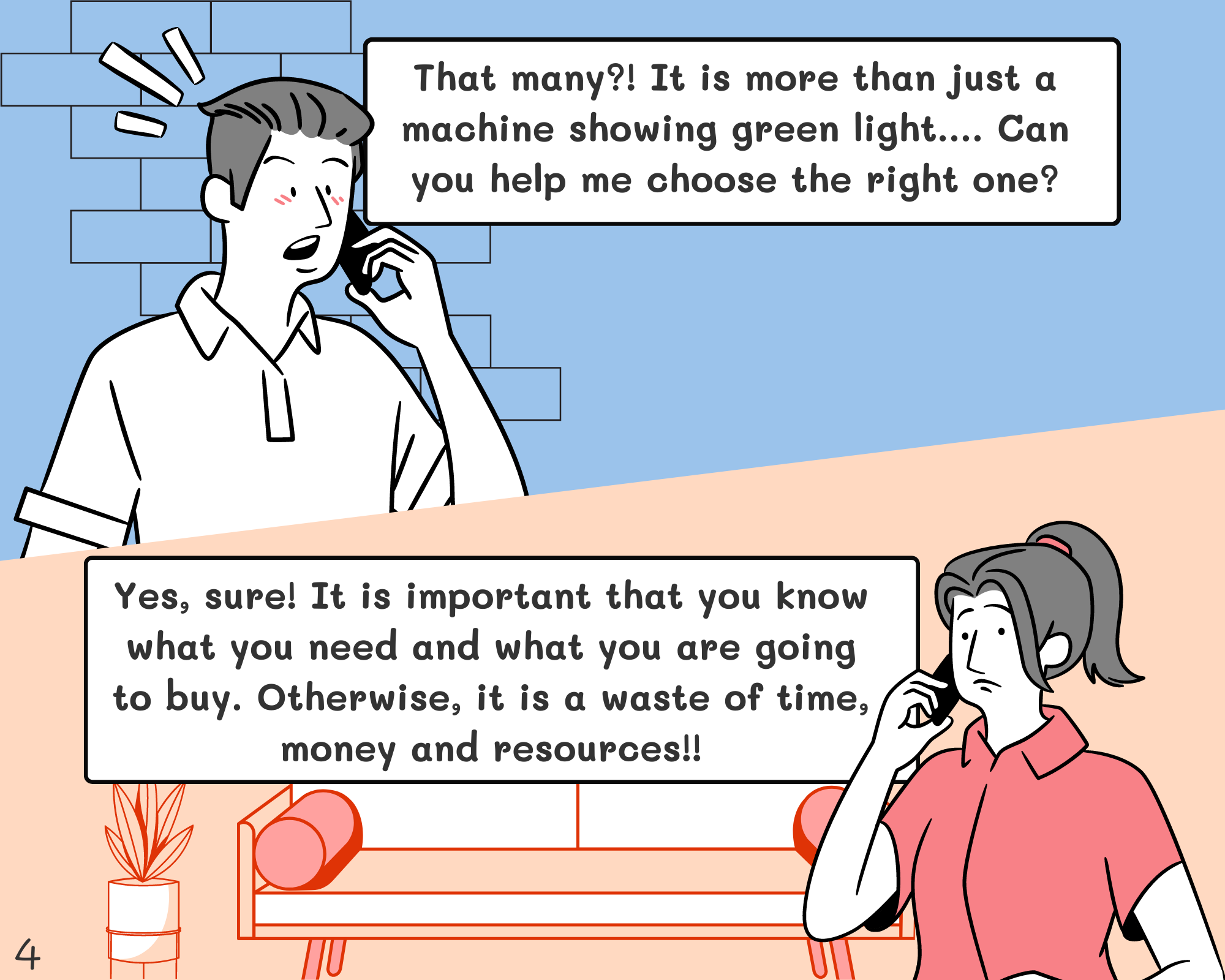



As 2022 starts, I would like to wish you a fantastic new year. I am very optimistic for the future, after those 2 bumpy years.
Covid crisis is affecting everybody. It is reshaping all of our ways of living. Supply chain is under pressure and logistics is quite rough: travels are subject to inbound/outbound countries regulations with sudden outbreaks, when goods have delays because of container shortage causing increased cost. The idea of potentially getting anything you want, quickly, cheaply, doesn’t factor in all the pressure on our planet’s resources.
The anti-waste law in France is one example of the action taken by the French government to tackle one the ever-growing issue of single use plastic. More initiatives and laws are coming in favor of carbon neutrality, which will positively affect our childrens’ future.
We build this future now, with all our decisions and achievements.
In this regard, meo team has achieved key milestones in 2021:
As there is a lot of buzz about air quality monitors, as it’s an easy way to limit viral propagation*, Covid included. There are 2 ways of looking at it, once you have CO2 monitors. Which one would be yours?
Communicate on the number of purchased monitors?
> Have low expectation with short-lasting CO2 monitor
Communicate on air quality improvement for occupants?
> Go for meo mini: full history and analysis available on any browser
Do you need to communicate how safe your spaces are? Let’s make it a reality, and move forward.
* Measuring CO2 is a key tool in managing ventilation level relative to the people in a room.
Schools have started for at least a month in most countries. We, as parents, are excited to have them enjoy in-person school life. But fears of COVID-19 linger in the back of our heads. Children are in closed environments most of the day. Scientists have said “masks + ventilation” are the key most important measures to control the spread of COVID-19 in schools. Masks can be controlled and teachers are on top of this. But how can school administrators know ventilation is adequate? how can parents be reassured about safe air in our children classrooms?
At meo we designed a new deviceto answer this problem. We are happy to announce the launch of ‘meo mini‘: the ideal device to monitor safe air in schools. This solution is an air quality safety system which includes a monitoring device, and a software solution to ensure safe, healthy and productive spaces.
How does it work?
Through air quality monitoring, meo mini monitors ventilation efficiency in an indoor space. It alerts of any issue through light notification and email, before it becomes a problem. It tells you exactly which classroom or space needs to have windows and doors open to flush risk away, and how much time those openings are required. Daily alerts and monthly statistics provide reassurance for teachers and parents.
How is the device?
Meo mini is a small device that can be placed anywhere in a classroom walls. It’s a Plug&Play solution with an embedded sim card using its own LTE network, which allows installation simplicity and high security. Powered through battery or USB-C.
How can a user access the air quality measurements?
A visual color coded display on the device is the first step of alert to know if ventilation is occurring in a closed environment. The device also connects to a system platform that sends notifications and alerts with options for remedial actions to be taken. The platform can also be accessed by administrators to identify patterns in time and root causes. This feature empowers them to take actions to reduce their exposure sustainably, and bring wellness into their space.
With Meo mini, air ventilation can be monitored and both parents and teachers can rest assured the classroom is a safe environment!
Tic Toc … It’s not a typo when referring to the “Tik Tok” app. It’s the French way to name the clock ticking, and time passing.
After 14 years in Hong Kong, it’s time for me and my family to move back to France.
Hong Kong is ✨magic!
We need to keep in mind that living in Hong Kong is a privilege. Hong Kong fosters successes (6 Ss) with:
Hong Kong is making our life so easy, we don’t want our ?kids to feel this is standard around the world. Because it simply isn’t the world standard. They need to feel how the real world feels like and get to appreciate it.
Supporting new ?ventures
Hong Kong was a great place for me to transition from my trading roles at Société Générale to my personal quest for cleaner air that morphed into meo. I got back to my electronic studies and soldering iron to design the 1st hardware with its embarked software. I worked with Pierre, CTO, who designed the cloud software side, with security, privacy and scalability in mind. From working in a corner of my bedroom to different offices in Sheung Wan, then in Soho.
Last September, we were selected by Hong Kong Science and Technology Park #HKSTP at the heart of the Greater Bay Area. So we moved our office to the ?“Material and Precision Engineering” cluster.
Hong Kong office will keep the responsibility of:
Meo Asian business will be supervised by Michael Horman, former Partner at Baker McKenzie. Michael has been involved in meo daily activities for the last 3 years. Michael will oversee meo business development in Asia, with the support of the current local team.
Expanding to Europe
Demand for cleaner air is increasing. This is a direct effect of ?Covid making the air we breathe a major focus.
Meo decided to #ChooseFrance for its Paris office, and answer the regional demand:
Safe air in ?schools!
How to reduce the covid risk in schools and office space?
We are launching “mini-meo” to answer this, with simple installation:
Hong Kong – Paris – Washington
Michael (michael@meo.life) is based in Hong Kong.
I (saketaram@meo.life) will be based near Paris.
Maria (maria@meo.life) is based in Washington. She handles the communication globally.
Do not hesitate to contact us about air quality in your school, office or retail space.
Contact: hello@meo.life
Soundtrack:
Wuxia2_Orchestra by PeriTune | http://peritune.com
Attribution 4.0 International (CC BY 4.0)
https://creativecommons.org/licenses/by/4.0/
Music promoted by https://www.chosic.com/
As life is adapting to a new “normal”, schools need to stay open to allow children to build their own identity through learning and social interactions.
Parents, teachers and students will go through tremendous anxiety thinking about the airborne risks that may await them in school. In order to reduce Covid risk in classrooms and any indoor places, it is necessary to check they are not underventilated.
Showing how fast issues were solved…
Meo air analytics newest monitor “mini-meo” will be available from September 2021. It ensures air safety in the premises, with alerts as soon as problems arise, and dedicated advice to remediate. You can then communicate and reassure staff, students and parents on air quality for any time since the installation of the monitors.
“Mini-Meo” is specially designed with dashboards to objectively reduce Covid-related risk:
How to reduce Covid risk?
Covid risk is higher in indoor places where the air is not enough renewed. [link to research]
Virus risk can be reduced with proper ventilation levels. They can be monitored through dedicated KPIs (Key performance Indicators) to adjust BMS (Building Management System) rules to ensure air circulation and appropriate ventilation.
It is easy to install, cyber-secure and the purchase of the monitor includes a 3 year data plan (sim card with data included) with wide access to air analytics!
As some countries start slowly to go back to work in offices, it’s probably time to think about the air we breathe in subways. We have learned so much about indoor air quality throughout this pandemic that we should probably check few things in our local subway system to assess its air quality. From studies conducted few years back we know that in average people spend 30-40 min in metros, time in which they are exposed to harmful air pollutants from components in the subways and from air pollutants that are brought in through the ventilation system.
An assessment from 2017 that looked at more than 160 studies from 20 countries found that airborne bacteria, particulate matter, aromatic hydrocarbons and carbonyls were the main pollutants in all metro systems. It’s estimated that more than 120 million people used the subway every day before the pandemic. In fact, the use of metros have been encouraged as a way to reduce outdoor air pollution, it has always been the smart, efficient and environmentally friendly way to commute.
However, studies have shown that the exposure to air pollution from point A to point B is higher when done in a subway than walking or in trams, but lower than in buses. Studies have also shown that some stations have very poor air quality but others have demonstrated to comply with the European PM2.5 air concentration limits. Suggesting it is possible to have stations with acceptable air quality. It is not clear if the PM prevalent in subways is more toxic than outdoor PM and very little information is out there on the long-term effects of subways’ air quality.
In essence, the source of subway PM comes from the train wheels, brake pads, steel rails and power-supply materials. And is affected by the ventilation, outdoor air supply, depth of station, date of construction, train frequency and the existence of screen-door systems.
Comparison between stations with better air quality and those with poorer air quality shows that changes can be made to improve things. For example, changes in train speed, type of ventilation, the implementation of screen-doors and the use of air purifiers are all positively impacting air quality in subway stations.
If some stations can have acceptable air quality, this means that constant air monitoring can lead to effective changes that will benefit those millions of subway users.
Open Edition Journals- Commuting by subway? What you need to know about air quality
Science Direct- Air quality inside subway metro indoor environment worldwide: A review.
The importance of air quality in schools has been much explained even before the pandemic. The schools have a combination of furniture, material for activities like painting and the fact that 20 to 30 kids breathe he same air for extended periods of time. In fact, children spend a third of their day in school, many in a single classroom. Moreover, often schools are in close proximity to highly polluted areas like avenues or cross roads. All these conditions combined with the temperature and humidity stuff the air with harmful particles and serve the proliferation of pathogens. In France, a study conducted in 2019 by the association RESPIRE showed that 100% of schools and kindergartens have PM2.5 measurements above the WHO recommended level and 1 in 4 are located less than 50 meters from a source of pollution.
After the 2020 shut down of schools across the globe for diverse lengths, more care has been put into the air quality in schools to resume in-person education. Social distancing and distance between desks in classes is a key aspect for schools to be allowed to re-open. However, it is now known that ventilation and air filtration is essential.
The CDC recommends to keep doors and windows open (if safe) and even encourages the use of fans to couple this and create air circulation. Ideally, outdoor air in-flow and outdoor air out-flow should be to reduce the concentration of virus particles in the air.
These times call for close monitoring of air quality in schools. For those with Heating, Ventilation and Air conditioning (HVAC) systems, it is essential to service them, to ensure ventilation is happening and to enhance air filtration. However, if HVAC systems are not in place, ventilation with the use of air flow that induces indoor and outdoor air circulation is a must and air filtration will further dilute any possible pathogen. The New York Times commissioned a simulation of air flow in a classroom where masking and table distancing is in place, it is clearly shown how simple measures like opening windows and placing filtration systems in the center of the classroom dilutes the existence of pathogens in the air making the classrooms much safer.
Spaciency-Focus Sur la Qualité de l’Air dans les Creches et les Ecoles Primaires
CDC- Ventilation in Schools and Childcare Programs
The New York Times- Why Opening Windows is a Key to Reopening Schools (subscription required)
Throughout the year 2020, we heard many reports from cities across the world showing how clear the sky was. In Delhi, in London, in San Francisco, in Los Angeles and many more. The normal conclusion most of us had was that halting human activity and transportation had a dramatic effect in clearing the air. Most of us thought a move to electric mobility will do the trick to reduce air pollution.
However, scientists dedicated to study air pollution saw a different reality. That portrays the complexities of air pollution. For 20 years Francesca Dominici from the Harvard T.H. Chan School of Public Health has been studying the effect of air pollution on health. She and her colleagues created a platform that links data on the health of Americans. They used Medicare and the quality of the air wherever they live. In the past, the amount of data they had and the time-span of it led them to clear conclusions.
When the pandemic struck in 2020 and countries started imposing lock-downs and reducing mobility. All scientists that had worked on air pollution took this opportunity to understand what happens when traffic is dramatically reduced. The answers where not as straightforward as we would have expected. Each country and even each city had different reactions. In some cities NO2 and CO2 levels went down but ozone went up.
In Italy, for example, it was observed that during lock-down air pollution did not go down as expected with cars and transportation industry halted. It turned out the PM2,5 levels were only 16% lower than in 2019. In fact, the highest polluter in Europe, parts of the US, Russia and East Asia is agriculture.
Joshua Apte, an atmospheric chemist at the University of California, Berkeley said: “I was really struck by how little the PM2.5 composition seemed to have changed” in Delhi, he says . “We were looking for a smoking gun” of emission changes, he says, “but there wasn’t one”. “Just as PM2.5 levels didn’t fall dramatically, their chemical composition didn’t shift radically”.
Nonetheless the association between air pollution and mortality and disease held true:
In China, improved air quality due to factory closures during lock-down saved between 9,000 and 24,000 lives. For scientists in this field it is very clear that better air saves lives. Worse air translates into more asthma attacks, more heart attacks, and simply more deaths.
Although the basic link between air pollution and death and disease held true during the pandemic, many new lessons were learnt. Air pollution complex composition should take into account traffic, agriculture, industries and many more sources of contaminants.
Sources:
Science News – What the pandemic can teach us about ways to reduce air pollution
National Geographic – Air pollution kills millions every year, like a ‘pandemic in slow motion’
Productivity across all levels of employment matters and business leaders struggle to make sure it is optimized by investing in training, team building, office settings, freebies and many other proven strategies. However, 15 years of research has shown a close link between air quality and productivity that are the basis for green buildings and better indoor air management.
For many years we have known about the sick building syndrome (SBS), which are the common ailments that arise from time spent in a particular building and being exposed to poor ventilation or air filtration, outgasses from building materials, volatile organic compounds (VOC) and molds. Common ailments resulting from SBS are: headache, dizziness, nausea, eye, nose or throat irritation, dry cough, itchy skin, poor concentration, fatigue, voice hoarseness, allergies, cold, increased asthma and flu-like symptoms. And it all escalates to affect our congnitive capacity and productivity. So efforts to reduce both indoor and outdoor air pollution are actually investments in productivity, human capital and economic development.
The earliest known research on air quality and productivity dates back to 1999. Since then many studies on packers, call centers, farmers and even football players have confirmed that poor air quality has a negative effect on productivity, both indoors and outdoors.



In 2011, the National Bureau of Economic Research looked at farm workers output and ozone levels. They found that a decrease of 10ppb in Ozone concentrations increases worker productivity by 4.2%. Overall the research found that even at lower levels of Ozone than the standard, there were negative impacts on productivity and its strict regulation would yield benefits in health, productivity and possibly other areas. This was followed in 2014 by a research at Columbia, the University of South California and the University of California-San Diego where researchers looked into the effect of PM2.5 on pear-packers in California. It was found that just a 10 unit increase in PM2.5 decreased productivity by approximately 6% and that productivity is affected even below US standards. Moreover, Harvard University researchers recently assessed the effect of air quality in knowledge workers, those who are indoors mostly in front of a computer throughout their work day. They analysed Ctrip productivity in China against indoor air quality and found that workers are 5-6% more productive when air pollution is 0-50 AQI compared to 150-200 AQI. In a separate research by Harvard and Syracuse University, researchers looked into VOCs, CO2 and productivity. In addition to confirming the negative effect of air pollution on cognitive function, they specifically found that the greatest change (up to 15%) was observed in those cognitive functions involved in crisis response, information usage and strategy.
This body of research has shown how important it is to look into ways to improve indoor air quality. John Mandyck, chief sustainability officer for the NYSE listed United Technologies Corporation (UTC) said:

So what can we do with all those buildings that are old or just not green?
Let’s:
Sources:
NIH – The Sick Building Syndrome
Harvard Business Review – Air Pollution is Making Office Workers Less Productive
INSIDER – The pollution outside your office window affects your work.
EPA – An Office Building Occupants Guide to Indoor Air Quality
The World – Want better thinking and productivity? Improve the air quality in your office.